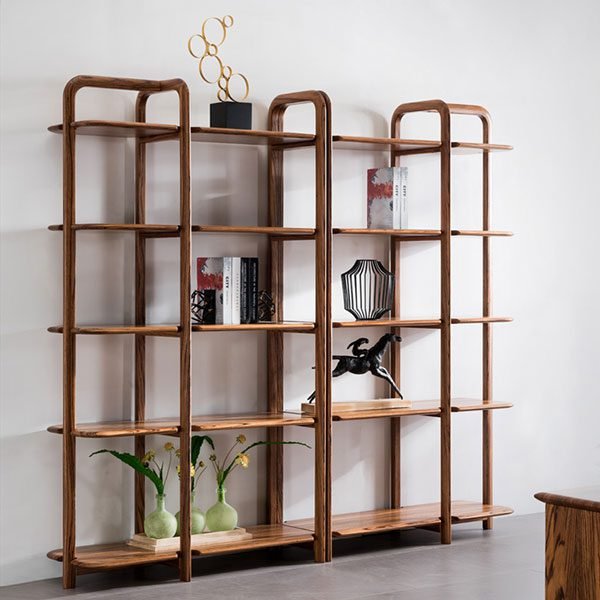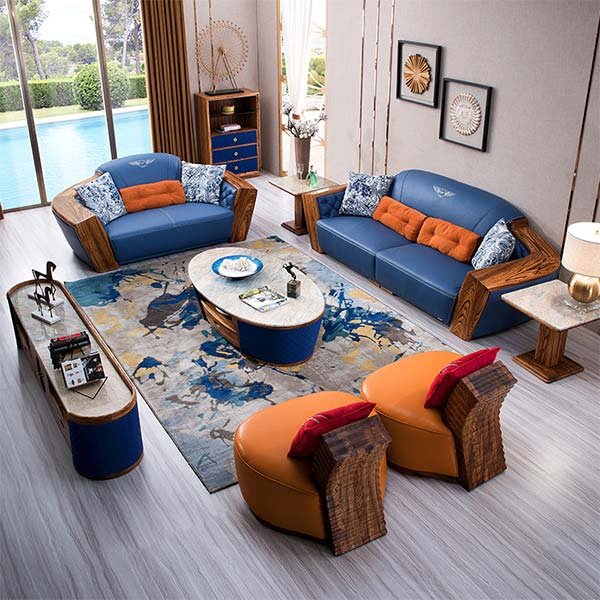Factors to Consider When Choosing a Leather Sofa
Choosing the Perfect Leather Sofa: A Comprehensive Guide
When it comes to furnishing your living room, a leather sofa is a timeless and elegant choice. Not only does it exude sophistication, but it also offers durability and comfort. However, with so many options available in the market, choosing the perfect leather sofa can be a daunting task. To help you make an informed decision, here are some factors to consider when selecting a leather sofa.
First and foremost, you need to determine the size of the sofa that will fit perfectly in your living room. Measure the available space and consider the layout of the room. A large sofa may overwhelm a small space, while a small sofa may look out of place in a spacious room. It is essential to strike the right balance between comfort and proportion.
Next, consider the style of the leather sofa. Leather sofas come in various designs, ranging from traditional to modern. Think about the overall aesthetic of your living room and choose a style that complements it. If you have a contemporary decor, a sleek and minimalist leather sofa would be a great choice. On the other hand, if you prefer a more classic look, opt for a leather sofa with tufted details and rolled arms.
Another crucial factor to consider is the color of the leather sofa. Leather comes in a wide range of shades, from neutral tones like black, brown, and white to bold colors like red and blue. The color you choose should harmonize with the existing color scheme of your living room. Neutral colors are versatile and can easily blend with different decor styles. However, if you want to make a statement, a bold-colored leather sofa can be a striking focal point in the room.
In addition to style and color, the quality of the leather is paramount. Genuine leather is known for its durability and luxurious feel. It ages beautifully and develops a unique patina over time. However, it can be quite expensive. If you are on a budget, you can consider leather alternatives like bonded leather or faux leather. While they may not have the same longevity as genuine leather, they can still provide a similar aesthetic at a more affordable price.
Furthermore, pay attention to the construction of the leather sofa. A well-constructed sofa will have a sturdy frame made of hardwood or metal. It should also have high-quality cushions that provide ample support and comfort. Additionally, check the stitching and seams to ensure they are strong and durable. A poorly constructed sofa will not only be uncomfortable but may also require frequent repairs or replacement.
Lastly, consider your lifestyle and maintenance requirements. Leather sofas require regular care to maintain their beauty. Some leathers are more resistant to stains and scratches than others. If you have pets or young children, it is advisable to choose a leather sofa that is easy to clean and can withstand wear and tear.
In conclusion, choosing the perfect leather sofa involves considering various factors such as size, style, color, quality, construction, and maintenance requirements. By carefully evaluating these aspects, you can find a leather sofa that not only enhances the aesthetic appeal of your living room but also provides comfort and durability for years to come. So take your time, do your research, and make an informed decision that suits your personal taste and lifestyle.
Different Types of Leather for Sofas and Their Pros and Cons
When it comes to choosing a leather sofa, there are several factors to consider. One of the most important decisions you’ll need to make is the type of leather you want for your sofa. Different types of leather have different characteristics, so it’s essential to understand the pros and cons of each before making your final decision.
One popular type of leather for sofas is full-grain leather. Full-grain leather is made from the top layer of the hide and is considered the highest quality leather available. It is known for its durability and natural beauty. Full-grain leather is also breathable, which means it will not retain heat or cold, making it comfortable to sit on in any weather. However, full-grain leather can be quite expensive, and it may develop a patina over time, which some people find adds to its charm, while others may see it as a drawback.
Another option to consider is top-grain leather. Top-grain leather is similar to full-grain leather but has been sanded and buffed to remove any imperfections. This process gives top-grain leather a more uniform appearance and a slightly softer feel. Top-grain leather is also more resistant to stains and fading than full-grain leather. However, it is not as breathable as full-grain leather and may not develop the same patina over time.
If you’re looking for a more budget-friendly option, you may want to consider split-grain leather. Split-grain leather is made from the lower layers of the hide and is typically less expensive than full-grain or top-grain leather. While split-grain leather may not be as durable as full-grain or top-grain leather, it can still be a good choice for those on a budget. However, it is important to note that split-grain leather may not have the same natural beauty or longevity as higher-quality leathers.
Bonded leather is another option to consider. Bonded leather is made from a mixture of leather scraps and synthetic materials. It is typically less expensive than other types of leather but may not have the same durability or natural feel. Bonded leather can also be prone to peeling or cracking over time, so it may not be the best choice for those looking for a long-lasting sofa.
Finally, there is faux leather, also known as synthetic leather or vegan leather. Faux leather is made from synthetic materials and is designed to mimic the look and feel of real leather. It is typically less expensive than genuine leather and can be a good option for those who want the look of leather without the higher price tag. However, faux leather may not have the same durability or longevity as real leather and may not develop the same patina over time.
In conclusion, choosing the perfect leather sofa involves considering the different types of leather available and their pros and cons. Full-grain leather is known for its durability and natural beauty but can be expensive. Top-grain leather offers a more uniform appearance and is resistant to stains and fading. Split-grain leather is a budget-friendly option but may not have the same longevity as higher-quality leathers. Bonded leather is less expensive but may not be as durable or long-lasting. Faux leather is a synthetic option that mimics the look of real leather but may not have the same durability or natural feel. By understanding the characteristics of each type of leather, you can make an informed decision and choose the perfect leather sofa for your home.
Tips for Maintaining and Caring for Your Leather Sofa
Tips for Maintaining and Caring for Your Leather Sofa
Once you have invested in a high-quality leather sofa, it is important to take proper care of it to ensure its longevity and keep it looking its best. Leather is a natural material that requires regular maintenance to prevent it from drying out, cracking, or becoming stained. In this section, we will provide you with some essential tips for maintaining and caring for your leather sofa.
First and foremost, it is crucial to keep your leather sofa away from direct sunlight and heat sources. Prolonged exposure to sunlight can cause the leather to fade and become brittle over time. Similarly, placing your sofa near a fireplace or radiator can dry out the leather, leading to cracks and damage. Therefore, it is advisable to position your leather sofa in a shaded area of the room, away from windows and heat sources.
Regular cleaning is another essential aspect of leather sofa maintenance. Dust and dirt can accumulate on the surface of the leather, causing it to lose its luster and become dull. To prevent this, it is recommended to vacuum your leather sofa regularly using a soft brush attachment. This will help remove any loose dirt and debris from the surface. Additionally, wiping the sofa with a clean, damp cloth can help remove any stubborn stains or spills.
When it comes to cleaning products, it is important to choose ones specifically designed for leather. Avoid using harsh chemicals or abrasive cleaners, as they can damage the leather and strip away its natural oils. Instead, opt for mild, pH-neutral cleaners that are gentle on the leather. Before using any cleaning product, it is always a good idea to test it on a small, inconspicuous area of the sofa to ensure it does not cause any discoloration or damage.
In addition to regular cleaning, leather sofas also require periodic conditioning to keep the leather soft and supple. Leather conditioners help replenish the natural oils that can be lost over time, preventing the leather from drying out and cracking. Apply a small amount of conditioner to a clean, soft cloth and gently rub it into the leather in circular motions. Allow the conditioner to be absorbed by the leather for a few minutes, and then wipe off any excess with a clean cloth.
To prevent scratches and scuffs, it is advisable to keep sharp objects away from your leather sofa. Pets with sharp claws should be kept off the sofa, or you can use protective covers to prevent any accidental damage. Additionally, avoid sitting on the sofa with clothing or accessories that have sharp edges or metal embellishments that could scratch the leather.
Lastly, it is important to address any spills or stains on your leather sofa immediately. Blot the spill with a clean, absorbent cloth to remove as much liquid as possible. Avoid rubbing the stain, as this can spread it further. If the stain persists, consult a professional leather cleaner who can provide specialized treatment to remove the stain without damaging the leather.
By following these tips for maintaining and caring for your leather sofa, you can ensure that it remains in excellent condition for years to come. Regular cleaning, conditioning, and proper placement will help preserve the beauty and durability of your leather sofa, allowing you to enjoy its comfort and elegance for a long time.
Conclusion
In conclusion, choosing the perfect leather sofa requires careful consideration of various factors such as the type of leather, quality, style, size, and comfort. It is important to assess personal preferences, budget, and the overall aesthetic of the space before making a decision. By following this comprehensive guide, individuals can make an informed choice and find a leather sofa that meets their needs and enhances the overall ambiance of their living space.



